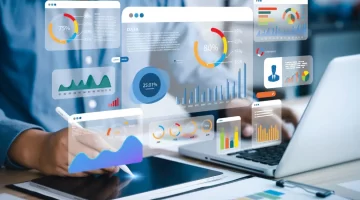
Forensic Accounting Techniques for Cryptocurrency Transactions
Cryptocurrency isn’t just digital money—it’s a trail of breadcrumbs. And forensic accountants? They’re the detectives following those crumbs. With crypto fraud, money laundering, and tax evasion on the rise, understanding how to trace these transactions is more critical than ever. Let’s break down the techniques that make it possible.
Why Forensic Accounting Matters in Crypto
You know how cash can vanish without a trace? Crypto isn’t as anonymous as people think. Every transaction lives forever on the blockchain—a public ledger. But here’s the catch: wallets are pseudonymous, not anonymous. That’s where forensic accounting steps in, connecting the dots between wallet addresses and real-world identities.
Key Forensic Accounting Techniques
1. Blockchain Analysis Tools
Tools like Chainalysis, Elliptic, and CipherTrace help forensic accountants map transactions. They analyze patterns—like frequent transfers to high-risk exchanges or mixing services—to flag suspicious activity.
For example, if a wallet suddenly sends funds through a tumbler (a service that obscures transaction trails), that’s a red flag. These tools can also cluster addresses likely controlled by the same entity.
2. Address Tagging
Think of this as labeling. Exchanges, darknet markets, and even ransomware operators often reuse wallet addresses. Forensic accountants tag these addresses to track illicit flows. If a wallet linked to a known scam starts receiving funds? That’s a lead.
3. Flow Analysis
Money moves in patterns. Flow analysis examines how crypto jumps between wallets, exchanges, and services. For instance, a common laundering tactic is “peeling chains“—sending small amounts to multiple wallets to avoid detection. Forensic accountants spot these by tracing the flow.
4. Timing and Behavioral Analysis
Timestamps matter. If transactions happen at odd hours or in rapid bursts, it could indicate bot activity or someone trying to cover their tracks. Behavioral analysis looks at how users interact with wallets—like delays between transactions or sudden large withdrawals.
5. Exchange Cooperation
Exchanges are choke points. Most require KYC (Know Your Customer) checks, so forensic accountants work with them to link wallet addresses to real identities. If stolen crypto hits an exchange, investigators can often freeze it—if they act fast.
Challenges in Crypto Forensics
It’s not all smooth sailing. Here’s what makes crypto forensics tricky:
- Privacy coins: Monero, Zcash, and others obscure transaction details.
- Decentralized exchanges (DEXs): No KYC means harder tracking.
- Cross-chain swaps: Moving assets between blockchains can break audit trails.
- Mixers and tumblers: Services designed to obfuscate funds.
Real-World Applications
Forensic accounting isn’t just theoretical. It’s been used to:
- Track the Bitfinex hack funds, leading to arrests years later.
- Uncover Ponzi schemes like BitConnect by analyzing wallet inflows.
- Identify ransomware payments (remember Colonial Pipeline?).
The Future of Crypto Forensics
As crypto evolves, so do the techniques. AI and machine learning are now being used to predict suspicious behavior before it happens. Regulators are also pushing for stricter compliance, meaning more tools—and more data—for forensic accountants.
But here’s the thing: crypto forensics isn’t about stopping innovation. It’s about keeping the ecosystem honest. Because when trust collapses, so does the market.




